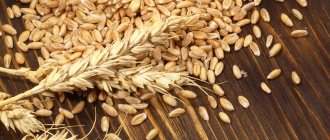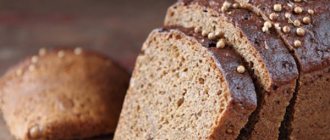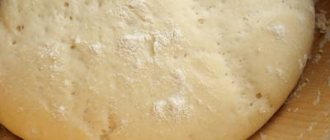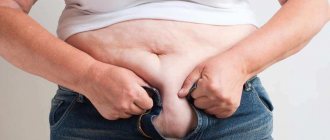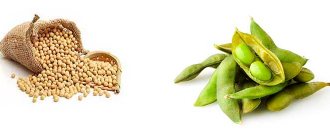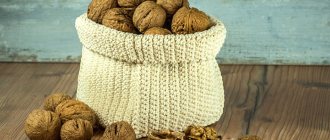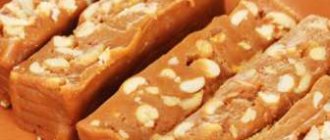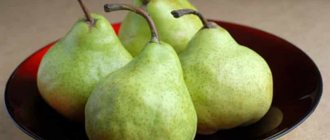The highest quality bread is made from finely ground, highly refined flour. This product is tasty and presentable in appearance, but not very healthy. The thing is that when thoroughly cleaning the grains from the shells, many useful substances are removed from them, which can improve digestion, cleanse the body of waste and toxins, and set up the intestines for proper functioning. Today, bran is often returned to baked goods in the form of additives, making it easier to control the quantity and quality of the resulting product.
Food for the poor
If several centuries ago such a product was considered the prerogative of the poor and low-income population, now, on the contrary, humanity is abandoning products made from high-grade white flour in favor of bran baked goods. The merchant class, of course, at one time did not even think about the benefits of bran bread, simply considering it the food of the poor. Civilization developed, scientists conducted experiments, conducted experiments, and views on many food products changed. About twenty years ago, the opinion about bran bread changed dramatically.
Today, many people prefer dietary white meat to fast food, green tea to sweet soda, fresh fruit to cakes and pastries, and bran bread to white rolls made from premium flour. The harm and benefits of this product are explained by the composition, so let's start with that.
How to bake bran bread at home
For cooking you will need coarse flour (wheat, oatmeal, rye).
- Vegetable oil (added to the dough and greased the mold).
- Dry yeast).
- Salt.
- Sugar.
- Soda.
- Water.
- Any additives (seeds, raisins, spices).
We recommend reading: Baking soda: beneficial properties, uses, how to take
Instead of wholemeal flour, you can buy regular wheat flour and bran.
Bran bread recipe in the oven
To prepare bran bread in the oven you will need:
- 320 g wheat flour;
- 100 g bran;
- 30 g vegetable or olive oil;
- 8 g dry yeast;
- 30 g sugar;
- 15 g salt;
- 10 g soda;
- 250 ml water.
The cooking process takes place in several stages.
- Dissolve sugar and yeast in a deep container (in warm water).
- Add salt, soda, seeds or spices to the water.
- Add flour into the resulting mixture in small portions to prevent lumps from forming.
- Knead thoroughly with a spoon, add bran and vegetable oil.
- After that, take the dough out onto the table and knead it, but so that it is not “clogged” or too soft, sticking to the table and hands.
- Transfer the dough into a container, cover with a towel, and leave in a warm place for 2 hours. During this time, it should double in size, after which, lightly mash it again and put it in the mold.
Depending on the type of oven, you should select a temperature range from 180 to 200 degrees. It will bake for 40-60 minutes. Readiness must be checked using a wooden stick. After cooking, do not immediately remove the product from the oven: leave it for 10-15 minutes with the oven open and turned off to cool.
Recipe for bran bread in a bread machine
To prepare bran bread in a bread machine you will need:
- 2.7 tbsp. wheat flour;
- 1.8 tbsp. bran;
- 1.5 tbsp. boiled warm water;
- 4 dec. l. vegetable or olive oil;
- 0.8 dec. l. dry yeast;
- 2 dec. l. Sahara;
- 0.5 dec. l. salt;
The cooking process takes place in several stages.
- Prepare a bread maker container.
- Add yeast, flour and bran, add salt, sugar, butter.
- Water pours in in a thin stream.
- The container is installed in the bread machine, after which you need to set the baking mode for rye bread.
Healthy bran bread will be ready in 3.5 hours.
Nutritional value and composition
Thanks to the study of the chemical composition of bran bread, the harm and benefits of the product were accurately identified and conveyed to the masses. Since then, the people began to love the “waste” of flour milling production.

- Bran bread contains healthy fiber, which “cleanses” the intestines, ridding the body of toxins. When blood cholesterol levels increase, doctors always recommend eating bran bread. Dietary fiber helps cleanse the blood and reduce the level of bad cholesterol.
- If you need to strengthen the immune system or get rid of accumulated toxins, it is also recommended to eat bran bread, which is rich in vitamins. There is also vitamin C, which is known to help the body cope with viruses and microbes, strengthening the immune system. There are also B vitamins, which have a beneficial effect on the nervous and cardiovascular systems. Bread with bran also contains vitamin E, which helps get rid of dangerous free radicals that can accumulate in tissues.
- The minerals contained in bran bread help improve metabolic processes.
- A unique substance called “lipomic acid” allows you to regulate numerous life processes that occur in the human body.
- The product contains almost the entire periodic table. But it’s worth highlighting zinc separately. It is this substance that can have a positive effect on the functioning of the reproductive, reproductive and nervous systems. In addition, zinc is an important substance that stabilizes brain function.
What is the difference between refined flour and wallpaper?
The grain itself consists of endosperm, germ and shells. Everything that is of nutritional value - vitamins, minerals, healthy fatty acids, dietary fiber - is contained in the germ and shells of the grain. Endosperm is mainly starch and gluten proteins (14%).
Once upon a time, our ancestors ground whole grains in stone millstones and obtained whole grain flour, from which they then baked bread. But such flour quickly deteriorated - the fatty acids went rancid, and enterprising descendants learned to separate the germ with the shells, leaving only the endosperm for industrial baking production.
Refined flour can be stored for years, has a snow-white, appetizing color, however, alas, it contains only starch (80%) and gluten (14%), and is practically devoid of vitamins and other useful substances.
Benefits for weight loss
Bran bread, the harms and benefits of which we are discussing today, is a healthy dietary baked product. Many people think that on a diet they should completely abstain from eating flour products. Of course, it’s worth quickly walking past the shelves in the store with aromatic loaves, pastries, cakes, rolls and crispy French baguettes. But it is recommended to linger near the shelf where the bran bread is.
White bread or a loaf contains simple carbohydrates, which do nothing but harm our figure. Another thing is bran bread. It contains complex carbohydrates that will not be stored in problem areas. They are processed by the body for a very long time, eventually turning into useful energy. Consequently, bread with bran is not only not harmful to the figure, but even promotes rapid fat burning.
How much bran bread can you eat per day?
The best bread for consumption should contain at least 20% bran.
- For children from 3 to 7 years old, the daily dose should not exceed 50-70 g.
- For an adult up to 300 gr. per day, with 30-100 g per dose.
- For those who are on a diet – 2-3 pieces per day, 40-100 g.
- Lactating women and pregnant women up to 150 g per day.
When using it, you should be attentive to your body, noticing the effect on the state of the body. Many manufacturers add various food additives to the product, which, in combination with other products, can cause an allergic reaction.
Benefits for the stomach and intestines
It has been proven that bread with bran helps normalize the functioning of the stomach and intestines. When wheat husk processed into flour enters the body, it swells and creates a feeling of fullness. A small piece of bran bread is both healthier and more filling than the same slice cut from a baguette or white bread.
Experts say that the main task of bread with bran is to cleanse the intestines. In addition, the product helps reduce appetite. Eating bran helps fight peptic ulcers and digestive problems. The substances that make up such bread help the body absorb starch more slowly, thereby reducing the glycemic index.
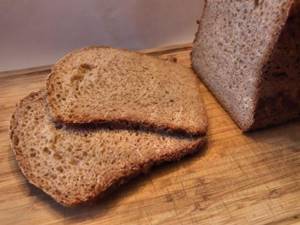
Is it possible to eat black bread when you are losing weight?
Baking made from rye flour is considered beneficial for the body and is familiar to everyone since childhood. It is possible to eat black bread when you are losing weight, but in moderation. It must be baked from wholemeal flour. Products made from it retain a lot of nutrients and fiber. It will be especially useful to eat a slice in the morning. This will help activate the digestive processes.

Rules of use
Experts advise taking into account some nuances if you intend to introduce bran bread into your diet. The harm and benefits of a product depend not only on its composition, but also on its correct use.
- In case of intestinal problems, when frequent constipation becomes an abnormal norm of life, you should eat two or three pieces of bread with bran every day. Also, for the prevention or treatment of hemorrhoids and constipation, a couple of slices of bran bread are recommended for pregnant women.
- While on a diet, one or two small pieces are allowed. The less fluffy the flour product is, the more coarse healthy fibers it contains. Small slices (10-20 g) will quickly remove the feeling of hunger and saturate the body for a long time. Bran bread is considered a more “profitable” snack than a banana or nuts.
- Just one piece of bran bread eaten for breakfast will help cleanse the intestines, as well as get rid of skin problems (acne, rashes). In the evening, of course, it is better to refuse any type of baked goods.
- Never eat bran bread if it is moldy, poorly baked, or expired. There is no point in buying bread for future use.
- Yesterday's bread is considered much healthier than fresh crumb.

Diet bread recipe
If you learn how to make your own baked goods at home, you will be one hundred percent sure that it contains only high-quality and healthy ingredients. You will be able to choose a bread recipe for your diet, the taste of which will meet all your requirements. Products are baked in an oven or multicooker. It is especially convenient to make them using a bread machine. This device not only bakes the product, but also kneads the dough. Remember a few simple recipes and be sure to use them.
Danger and harm
The following health problems are contraindications for eating bran bread:
- Acute gastritis.
- Pancreatitis.
- Colitis.
- Osteoporosis.
- Peptic ulcer of the stomach or duodenum.
- Acute hemorrhoids.
- High temperature and acute period of influenza.
If a patient has acute inflammation of the mucous membrane, the doctor will never advise him to eat bran bread. But if the disease is in the dormant stage, then bran, on the contrary, can have a positive effect on the healing process. Be sure to consult your physician before use.
The most important rule is compliance. Even if you are obese, you can eat bread, but it is important that it is of high quality, healthy and correctly chosen. Bran bread is not a panacea for all diseases. This is a product that can support your body, relieve some health problems and prevent the development of more severe conditions.
In the oven
- Cooking time: 125 min.
- Number of servings: 8 persons.
- Energy value of the dish: 1891 kcal.
- Purpose: diet.
- Cuisine: European.
- Difficulty of preparation: medium.
The first oven recipe you will read is very unusual. There is not an ounce of flour in the baked goods. Bran, cottage cheese and eggs are put there. It turns out not only low-calorie, but also very tasty, which is very important for people who eat dietary products. It is recommended to use the product prepared according to the following option in the morning or for lunch.
- eggs – 8 pcs.;
- ground coriander – 1 teaspoon;
- low-fat cottage cheese – 240 g;
- salt – 2 tsp;
- oat bran – 375 g;
- dry yeast – 4 tsp;
- wheat bran – 265 g.
- Using a meat grinder, mill or other suitable object, grind and mix the two types of bran. Place them in a deep bowl.
- Add yeast, eggs, mix everything thoroughly.
- Add grated cottage cheese. Add coriander and salt. Knead the dough.
- Line one deep silicone mold with parchment. Place the mixture on it, smooth it out and let it sit for about half an hour.
- Preheat the oven to 180 degrees. Place the pan on a baking sheet and cook for an hour.
- Moisten the crust of the finished loaf with warm water. Cover the pan with a towel. It is recommended to cut dietary baked goods after they have cooled completely.
Calorie content
When you create a diet menu, you need to take into account the calorie content of each product. Carbohydrate content and glycemic index are equally important. Although beneficial properties remain important.
By presenting the ratio of carbohydrates/calorie parameters per 100 g/glycemic index, the following values can be obtained:
- White – 48.6/235-240 kcal/80-85.
- Cherny, Borodinsky – 40.7/207-220 kcal/65.
- From buckwheat flour – 34.2/175-200 kcal/50.
- Bran – 11.3/216-250 kcal/45.
- Grain, rye – 43.9/228-230 kcal/40.
If you prefer bread during meals, then you should not only choose the “right” product, but also consume it in the first half of the day for more active absorption and subsequent energy expenditure.
Is it worth giving up bread completely?
Theoretically, you can completely refuse anything. But in practice there will be difficulties associated with restrictions. First of all, psychological, leading to breakdowns, serious illnesses and disorders. Therefore, you should not sharply limit yourself in bread. It's better to eat in small portions.
There are several more reasons why bread should not be completely excluded:
- the content of nutrients necessary for the body to maintain vital functions;
- content of vitamins and minerals;
- content of valuable proteins, a number of essential amino acids (methionine, lysine, threonine).
Therefore, if bread is the hardest thing to give up on a diet, you can leave it by reducing the serving size.
Energy value of the product
There are more than twenty types of bran bread. They basically have the same composition, the only difference is the introduction of additives such as dried fruits and seeds.
When choosing such bread, consider the proportions of bran in relation to other components. Unscrupulous manufacturers sprinkle regular bread with bran and pass it off as a natural product. In high-quality “correct” bread, bran is contained in the dough. Their percentage is at least thirty. When preparing the product, the beneficial qualities of the components remain unharmed.
Bran breads are classified as dietary dishes. And this despite the fact that its energy value is quite high - 250 Kcal. What's the secret? The fact is that these kilocalories do not harm our figure, since bran bread contains a lot of fiber. It is because of this that the calorie content is so high. However, when fighting extra pounds, you still shouldn’t abuse this bread, because it still contains flour, as well as other components.
On a note! In the tsarist army, they noticed the following paradox: the officers who ate better than other soldiers had much worse immunity. But the soldiers could boast of excellent health. The commission that investigated this case found out that the whole issue was in the bran bread that was given to the soldiers, so the officers' menu was revised.
Who shouldn't eat it?
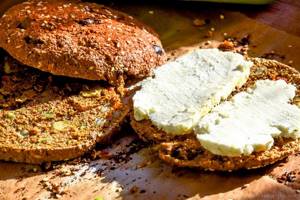
Despite all the advantages of bran bread, not everyone can eat it. And first of all, this product is prohibited for people who have gastrointestinal ailments.
Contraindications:
- colitis;
- pancreatitis;
- peptic ulcer, as well as gastritis;
- hemorrhoidal pathology.
Bran has a coarse, harsh structure. It can aggravate the ailments of diseased organs. In any case, first consult a specialist.
